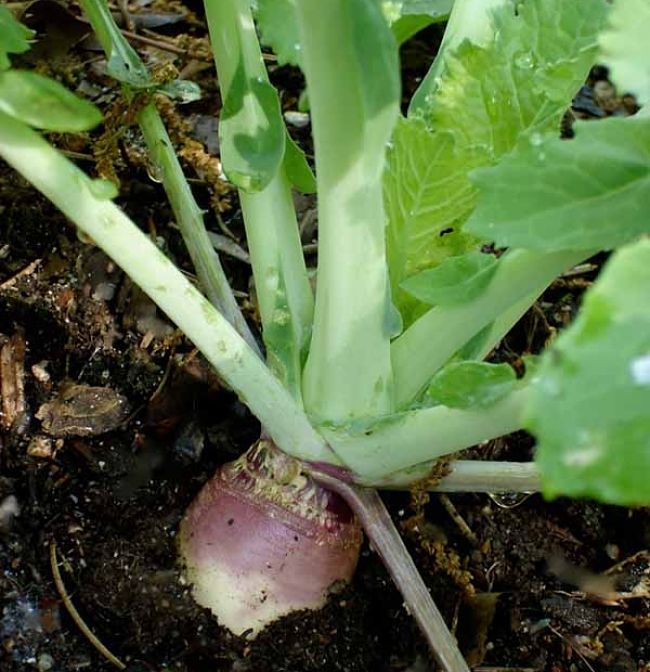Planting and Growing Guide for Swedes (Brassica napus var.napobrassica)
Description
Swedes belong to the Turnip family. The plants have reddish purple leaves and produce round root bulbs with creamy white flesh. Swedes are slow growing, taking about 3-4 months to grow to full-size, though the tops and small bulbs can be eaten continuously. Swedes is a winter vegetable, generally planted from Late Summer into Autumn (Fall); harvesting in Winter and Spring. In warm climates, Swedes can only be grown in the Winter months. As with carrots, do not add fresh compost or manures to the soil where you sow Swedes seeds to prevent forking. Swedes require an adequate supply of trace elements and so make adjustments for your soil deficiencies. Add a complete fertiliser or well-rotted manure sparingly as the plants grow. Nitrogen and organic material are helpful. In cooler areas, Swedes are best left in the ground and harvested on the day you need them. At the end of the season, they can be picked and stored similar to potatoes. Swedes are normally harvested when they reach the size of a tennis ball. The leaves can be cooked like cabbage when young.
Planting Guide
Seed Depth: Sow seed directly into the garden at a depth of 1 cm (1/2 inch). Like other root vegetables they do not transplant well. Seeds will germinate in 4-7 days.
Space between plants: Allow about 10-20 cm (4-8 inches) between plants, with a 40 cm (15 inch) space between rows
Harvest Time: Harvest in 10-14 weeks. However, you can harvest when the roots are small
Hints:
- Grows best in full sun, but can be grown in partial shade in warmer areas
- Will grow in a range of soil types, except for heavy clay soils
- Feed regularly and add compost around the plants as they grow as a mulch and source of nutrients.
- Water frequently, especially in hot weather
- Ensure maximum flavor by growing the plants quickly and avoiding growth checks.
- Cold weather improves the flavour and texture of Swedes when harvested
- The young leaves can be cooked like cabbage and used as a leafy green in various dishes
- Swedes tolerates frost and drought, but grows best in cool conditions. Hot weather may cause excessively fast growth, and bolting to flower
- Plant extra seed so that you can continuously harvest the thinnings and small roots throughout the growing season

Disclaimer: The PlantWhatWhen vegetable planting guide is only designed for use as a very general reference for home gardening purposes. It is not to be used for farming, markets or commercial activities of any kind whatsoever. We take absolutely no responsibility for the accuracy and adequacy of the information provided on this site. We recommend that you consider your local climate, weather patterns and conditions when deciding what and when to plant in your home garden. It's entirely your own decision. Happy Gardening and Best Wishes!